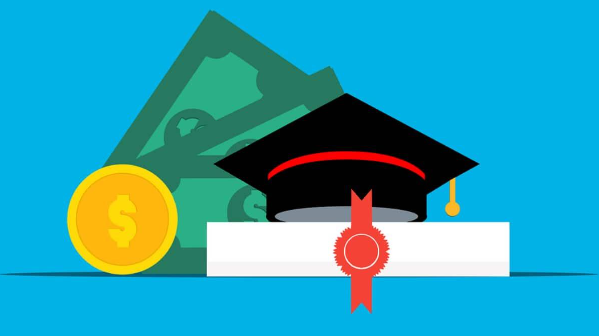Financial aid significantly and diversely influences educational access, affecting many facets of the educational environment. Financial assistance programs aim to lower the financial obstacles that prevent people from going to college. This is a thorough examination of how financial aid affects students’ ability to obtain education:
- Broadening Access to Higher Education:
Grants, scholarships, and loans are examples of financial help that increases access to higher education for people who may not otherwise be able to pay for their tuition and other associated costs. It guarantees that post-secondary education is an option for students from a range of socioeconomic backgrounds. Increasing access to higher education is essential for fostering economic growth, social mobility, and a more just society. This entails putting laws and programs into place that guarantee people from all backgrounds, regardless of socioeconomic standing, have an equal chance to pursue and be successful in higher education. A critical tool for increasing access is financial assistance through loans, grants, and scholarships. Thanks to these programs, students who would not otherwise be able to pay for tuition and other expenditures can now afford an education.
- Reducing Socioeconomic Disparities:
Financial aid helps low-income people and families finance school, mitigating socioeconomic gaps. It lessens the achievement gap in schooling between various socioeconomic groups and helps level the playing field. Achieving the difficult but essential objective of reducing socioeconomic gaps would help build a just and equitable society. The uneven distribution of resources, opportunities, and results among various groups based on their social and economic standing is called socioeconomic inequalities. Various facets of people’s lives must be touched by comprehensive initiatives to address these inequities. One noteworthy tactic is to invest in education. From early childhood to higher education, high-quality education helps break the cycle of poverty by giving people the information and skills they need for greater economic possibilities.
- Increasing Enrollment Rates:

Higher enrollment rates at colleges and universities are frequently correlated with having access to financial assistance. With financial help, those who may have been discouraged by the expense of school are more likely to enroll and finish their studies. Raising enrolment rates is an essential educational objective because it encourages accessibility and gives a wide variety of people the chance to pursue higher education. High enrollment rates promote a better educated and skilled populace, which benefits social and economic growth. Providing grants, scholarships, and financial aid programs makes education more accessible to a broader range of students. This covers financial aid that is awarded based on both merit and need. Tuition-free or inexpensive education models can be implemented at the institutional or national level, which removes a significant enrollment barrier and encourages more people to seek higher education.
- Improving Retention and Graduation Rates:
Financial aid alleviates a student’s financial load, which can lead to increased graduation and retention rates. Financial help recipients are more likely to finish their degree programs because they are less likely to drop out owing to financial difficulties. Ensuring the success and well-being of students in higher education requires improving retention and graduation rates. The capacity of educational institutions to maintain student enrollment is known as retention, and the proportion of students who successfully finish their degrees within the allotted time is known as the graduation rate. Providing students with academic support services, such as writing centers, study groups, and tutoring, increases their chances of succeeding in school and assists them in navigating challenging courses. By implementing mentoring programs, students are matched with seasoned mentors who can offer them support, direction, and counsel throughout their academic careers. This helps pupils overcome obstacles and cultivates a feeling of community.
- Encouraging Academic Achievement:
Academic performance criteria are standard in financial assistance programs, which encourage students to do well in school in order to remain eligible. This encourages academic success and keeps students’ attention on their learning objectives. Promoting academic success is a primary objective in education since it creates a constructive learning atmosphere and inspires students to perform well in their coursework. Academic accomplishment benefits student success on an individual basis as well as the general quality of education. Encouraging academic accomplishment starts with providing high-quality instruction using fun and efficient teaching strategies. Driven and well-prepared teachers are essential in encouraging pupils to achieve academic success. Differentiated education, which acknowledges and accommodates a range of learning styles and skills, guarantees that every student’s specific requirements are met and fosters a sense of achievement and mastery.
- Addressing Equity in Access:

By guaranteeing that all students, regardless of their socioeconomic status, have an equal chance to pursue higher education, financial assistance programs seek to address issues about equality. This is especially crucial for encouraging inclusion and diversity in educational settings.
- Supporting Underrepresented Groups:
Underrepresented groups, like minorities or first-generation college students, can get financial aid tailored to their needs, giving them the encouragement they need to continue higher education. This makes the learning environment in schools more inclusive and varied.
- Alleviating Student Debt:
Even though they are a type of financial help, loans can potentially increase student debt. Nonetheless, well-thought-out financial aid packages incorporate strategies for controlling and reducing student loan debt. Initiatives to lessen the financial burden on graduates include income-driven repayment arrangements and loan forgiveness programs.
- Promoting Access to Vocational and Technical Education:
Financial help is available to promote admission to vocational and technical education in addition to traditional four-year universities. This increases the variety of educational options accessible to people with various job goals.
- Enhancing Workforce Development:

Financial aid supports education and training programs that align with industry and labor market demands, which is critical in creating a competent workforce. This guarantees that people may learn the abilities needed for both present and future employment prospects.
Conclusion
In conclusion, financial aid has a revolutionary effect on educational access by lowering financial obstacles, advancing fairness, and enabling people to pursue higher education. In addition to enrollment and completion rates, a thorough examination must consider the long-term socioeconomic consequences and the broader advantages of an educated populace to society.









